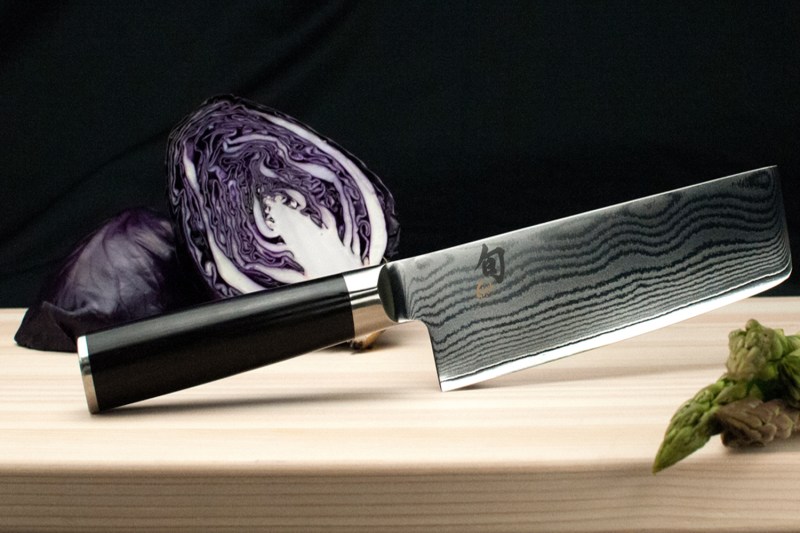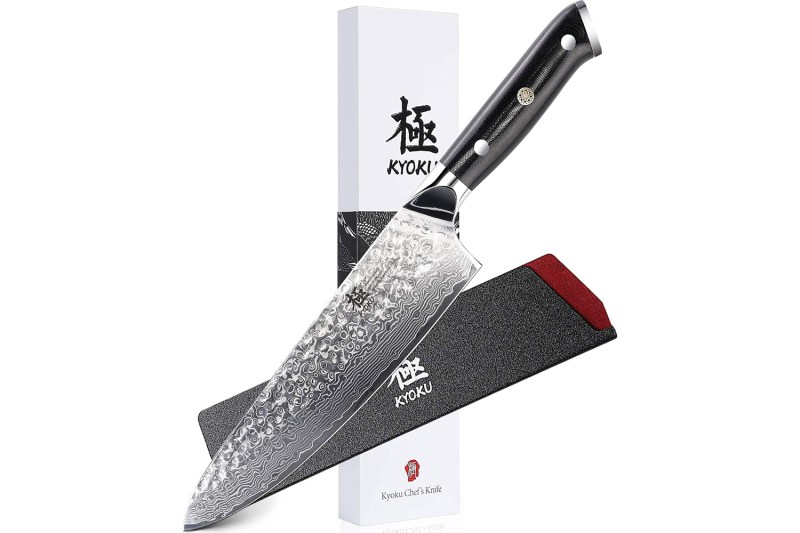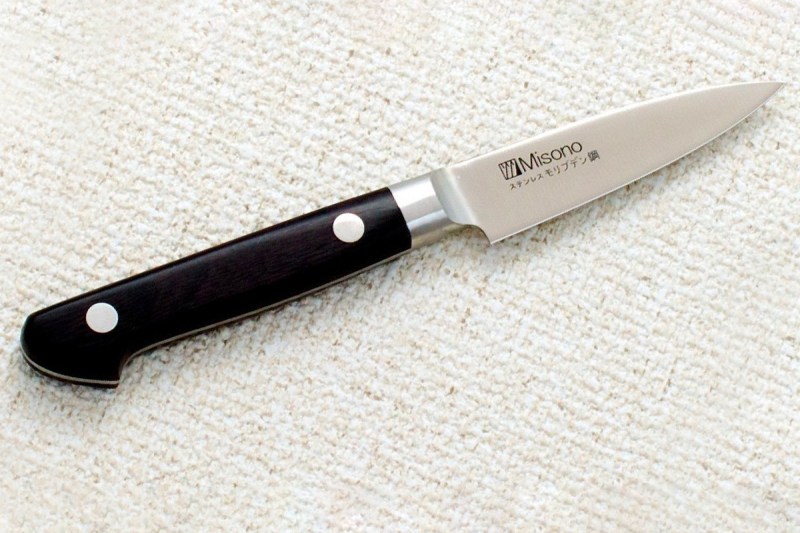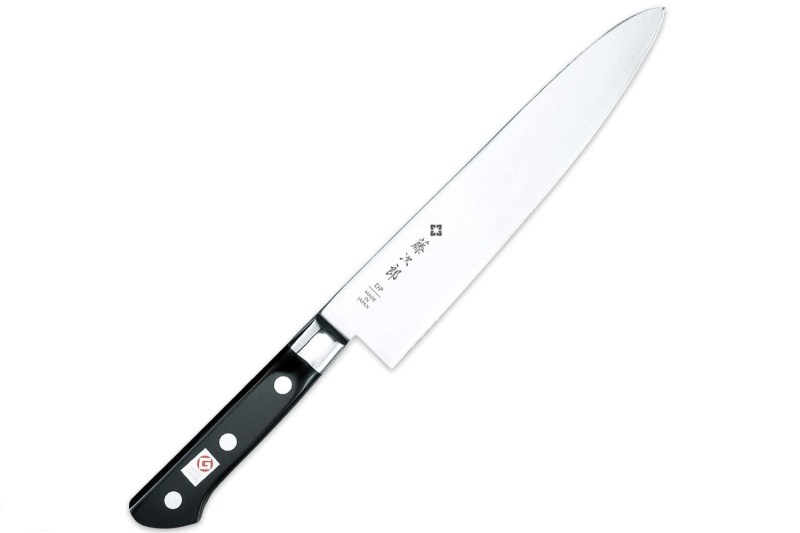A kitchen without a good knife is like a bike without wheels. Like a classic wooden spoon or cast-iron frying pan, it's a culinary staple you can't cook well without. And when it comes to the topic of knives, the Japanese offerings tend to be the very best of the lot.
You may currently have a go-to chef's knife that you can't seem to part with. But like most things (mattresses, automobiles, earbuds, smartwatches), once you upgrade, you'll wonder why you didn't do so long ago. A better blade will lead to better cuts, better prep, better meals, and just more enjoyment anytime you throw the apron on. Simply put, of the best kitchen tools out there, a great Japanese knife is way up there on the list.
What makes them stand out from the crowd? Japanese knives are lauded for their thin, sharp blades ensuring that you can swiftly slice vegetables or even carve meats and sushi like a samurai without worrying whether your blade will lose its sharpness over time. There are a few considerations before you dive in.
Make sure you have a basic idea of the best steel for knives, as well as how to handle a knife or before purchasing your first Japanese knife. Since some cutlery is forged from carbon steel, you’ll need to maintain them to avoid staining and rusting. Be careful when washing Japanese knives as they are more delicate than their German (or Western) counterparts. Although Japanese-crafted cutlery requires less maintenance, it does not mean you should let it rot in your kitchen.
Our advice? Read the care instructions after purchasing your Japanese blade to ensure it stays sharp and strong. Surely, no one wants to spend hundreds of dollars on a kitchen tool only to have it rendered unusable after a few months.
Determining the best chef knife really comes down to preference. We've already told you our pick for the best chef knife (below), is the Sakai Takayuki Gyuto Chef Knife. But, that's not to say German blades are bad. There are some kitchen tasks that German chef's knives tackle more easily than Japanese, and vice versa. Think about what you'll be slicing through the most. Will it be something like fish or fruit that can demand a more precision cut? If so, a Japanese blade may be best. If you're butchering large volumes of meat where you may be chopping through bone and cartilage, a heavier-duty workhorse German steel knife might be the ticket.
Don't worry, we got you covered with the best knife sharpeners for every kind of blade. Ready to hunt for the best blade to suit your cutlery needs? Check out our list below of the best Japanese knives for chefs and home chefs.











Sakai Takayuki Gyuto Chef Knife
A product of exceptional craftsmanship, Sakai Takayuki’s Gyuto Chef Knife is forged from VG-10 Damascus steel, which consists of 45 layers to maintain its sharpness and durability. Not only that, the knife’s hand-made magnolia handle makes the tool water-resistant, allowing it to retain its sublime beauty. If you want the right balance of aesthetics and function, we recommend giving this chef knife a try.


Dalstrong 6-inch Nakiri Vegetable Knife (Phantom Series)
If your knife set is going to be complete, then you’re going to want to have a vegetable knife on hand. Made for rapid chopping, this Nakiri Vegetable knife not only gets the job done, but it does so with beauty and ease. Boasting a 58-HRC Japanese stainless steel and an ergonomic Pakkawood handle, this elegant knife is designed to slice through vegetables stealthily and quickly, like a ninja lurking in the shadows, while ensuring durability and comfort. This makes the Nakiri Vegetable Knife Phantom Series a top culinary “weapon” of choice among enthusiasts or master chefs who want to use a high-performance knife in the culinary battlefield.


Shun Premier Chef's Knife
Did you know that shun refers to a time when an ingredient is at its most flavorful? A hallmark of Japanese cuisine, knife brand Shun honors this tradition to ensure that its culinary equipment is at its peak anytime, anywhere. That being said, we strongly recommend using Shun’s Chef Knife, with its sharp blade designed to cleanly slice fruits and vegetables and make meal preparations more enjoyable. Be sure to spend time maintaining the blade’s sharpness for peak performance.


Miyabi Evolution Chef’s Knife
Meet Miyabi — a Zwilling group brand that blends age-old traditions and modern design to craft the finest Japanese knives. One of our favorite knives from the brand is the Evolution Chef’s Knife, a striking blade designed to provide long-lasting comfort and smooth meal preps to its wielder. With a 61 Rockwell Hardness and double Friodur steel hardening, the Evolution Chef’s Knife is a revolutionary tool that guarantees durability, performance, and corrosion resistance — perfect for chefs who want a reliable blade in the kitchen.

Global 8-inch Chef Knife
Designed by Komin Yamada, Global is a well-established brand known for crafting world-class Japanese knives using both locally rooted and modern techniques to appeal to budding chefs. So if you want a culinary powerhouse at your disposal, Global lightweight chef’s knife will be your top choice as it uses Cromova 18 stainless steel to keep it sharp and ready to use, while offering protection against stains and rust — a cook’s worst nightmares. As a bonus, this chef knife also boasts a dimpled, non-slip handle to prevent cuts from disrupting your cooking.


Kyoku Daimyo Series Chef Knife
Kyoku’s Chef Knife embodies both beauty and functionality, with its meticulously crafted golden mosaic pin on the handle evoking a luxurious aura, and wide, curved blade offering versatility and performance in the kitchen. This chef knife can do mincing, dicing, and slicing as much as a powerful blender can do. This also sports a balanced, lightweight design, making this tool a top choice for at-home chefs who are prepping food for large groups. We know it’s fun to cook for people, but you know what’s even more fun? A chef knife that does not cause hand fatigue.


Enso Chef's Knife
Want food for thought? Enso’s knives are forged in the “City of Blades” or Seki, a city known for its expertise and history in swordsmithing. Cool, right? What’s cooler about the brand is it combines tradition with technology to design state-of-the-art knives that align with the needs of chefs. Its micarta handle, for example, features a robust tang construction to help it maintain balance (Fun fact: Enso means “harmony”) and ensure longevity. Like other Japanese knives, Enso’s chef knife boasts superb edge retention and double-bevel edge — ideal for both right-handed or left-handed chefs.


Misono Molybdenum Paring Utility Knife
Misono is known for its high-quality knives that are a perfect hybrid of Japanese and Western-style cutlery. This paring knife has a thin, lightweight blade that’s perfect for everything from de-veining shrimp to removing the seeds from chili pepper. For a tool that you’ll likely use every day, you can’t beat the price of this kitchen essential.


Masahiro 14904 MVH Utility Knife
As one of the most prestigious Japanese knife brands, you can’t go wrong with a Masahiro. The blade is asymmetrical — 80% of the cutting edge is on the front side of the knife, which gives you the power to make more precise cuts. The ergonomic laminated wood handle makes this lightweight 6-inch knife as durable as it is user-friendly.


Tojiro 8.2-inch DP Gyutou
An all-purpose chef's knife, the Tojiro DP Gyutou knife features a full tang three-ply construction that ensconces a core of VG-10 super steel with a 60+ Rockwell hardness. A triple-riveted handle adds weight and balance to the knife, allowing you to do just about anything you need to in the kitchen.

Frequently Asked Questions
It's pretty obvious that the best Japanese knives are not going to be made in the USA, China, or any other country other than Japan. If you're obsessed with Japanese hand-crafted knives and looking to make a pilgrimage to the place where the best Japanese chef's knives come from, you'll want to check out Sakai City. Of all the hand-crafted Japanese knives made in the country, around 90 come from here.
When it comes to the best chef knife, Japanese is the way to go. And, if we had to pick just one for the best Japanese chef knives for chefs, we would pick the Sakai Takayuki Gyuto Chef Knife. It blends beauty, quality, and reliably all in one. It's why it is a go-to knife for professional chefs around the world. With over 600 years of knife crafting knowledge handed down over the generations, it's hard to beat this knife.
Sharpening Japanese knives requires a slightly different technique than sharpening Western knives due to their thinner blades and steeper bevel angles. Here's step-by-step instructions to help you achieve a razor-sharp edge on your Japanese knives.
Things you'll need
- Coarse whetstone (around 1,000 grit) for initial sharpening and removing nicks.
- Fine whetstone (around 3,000 to 8,000 grit) for refining the edge and achieving sharpness
- Finishing stone (optional, around 10,000+ grit) for an ultra-polished edge.
- Sharpening lubricant - Water is commonly used, but honing oil can provide additional lubrication.
- Sink or container with water for soaking the whetstones
- Towel or cloth for drying the knife and whetstones
- Marker (optional) to mark the burr on the blade
Method
- Soak the whetstones in water for at least 15 minutes, or according to the manufacturer's instructions. This ensures they are properly hydrated for sharpening.
- Wash and dry the knife thoroughly.
- Place the whetstone on a non-slip surface. Hold the knife at the correct angle (usually 15 to 20 degrees for Japanese knives) and slide it back and forth along the stone, applying light to moderate pressure. Use the entire surface of the stone and maintain the angle consistent throughout the strokes.
- As you sharpen, a tiny metal burr will form on the opposite side of the blade from the side you're sharpening. This is a good indication that you're making progress.
- Once you've created a burr on one side, flip the knife and repeat the process on the other side, creating a burr on that side as well.
- After you've established a burr on both sides with the coarse stone, switch to the fine whetstone. Repeat the same process as with the coarse stone, but use lighter pressure and focus on refining the burr and achieving a sharper edge.
- If you want an ultra-polished edge, use a finishing stone. Apply very light pressure and focus on polishing the burr away completely.
- After sharpening, it's important to de-burr the edge to remove any remaining metal burrs that could cause the knife to chip or snag. You can do this by stropping the knife on a leather strop or by running the heel of the knife, without grinding, along the smooth side of the whetstone.
- Wash and dry the knife and whetstones thoroughly.
Any of the above blades will sharpen your cooking acumen. They'll make prep easier and presentation more fun. Plus, you'll get a new tool that'll likely last you a lifetime.




